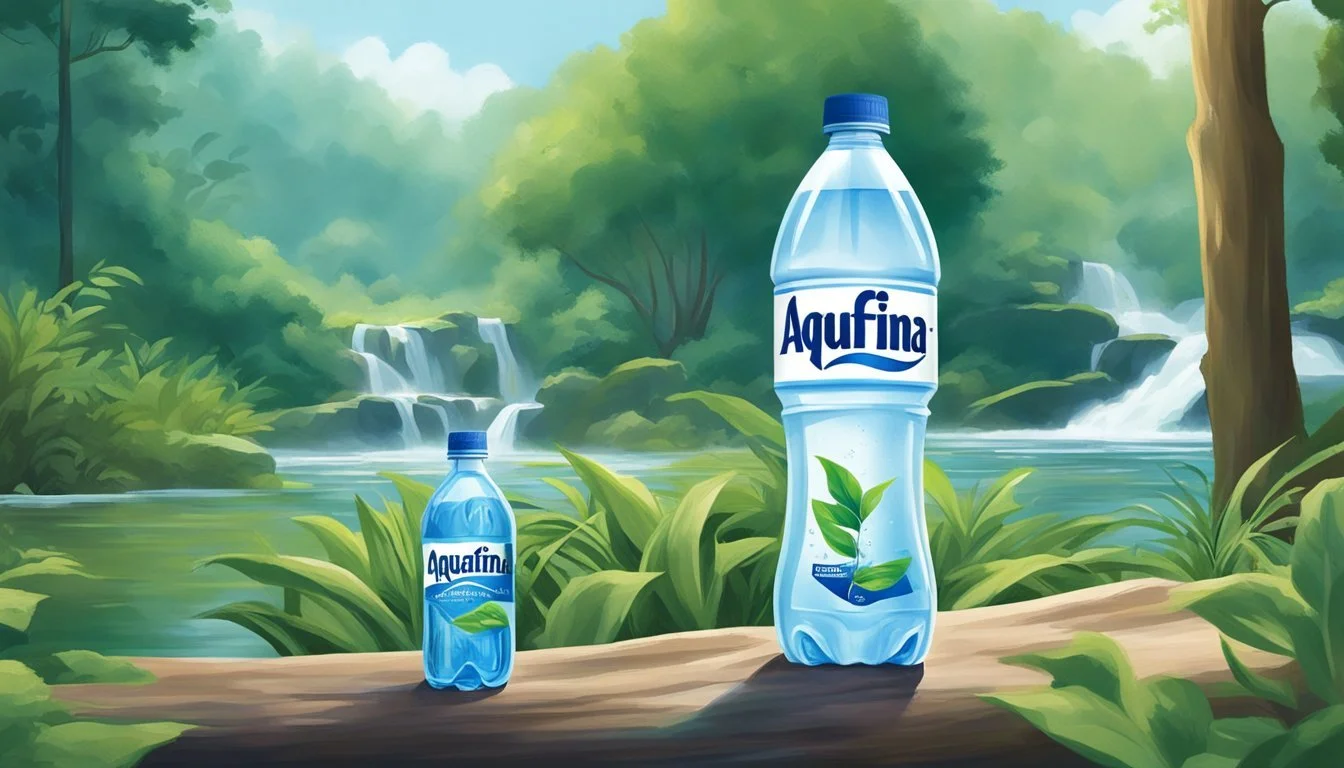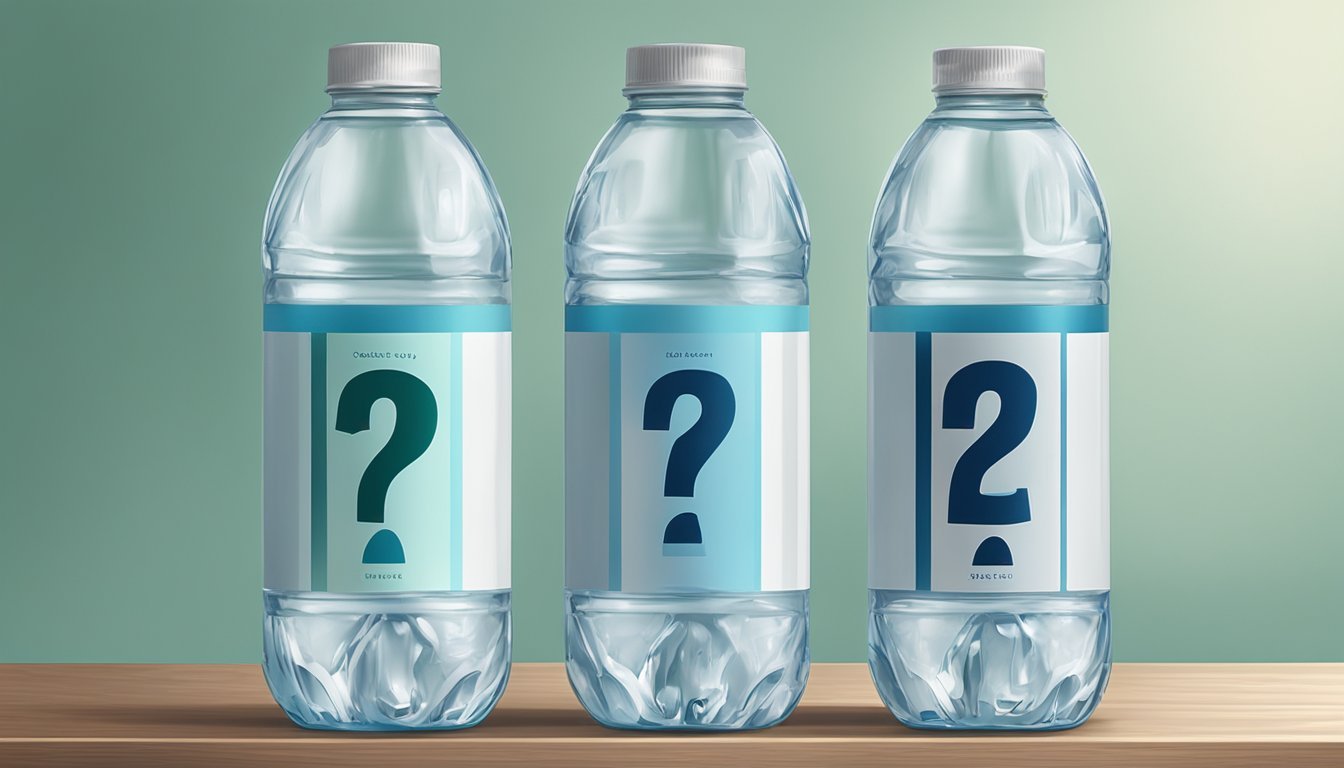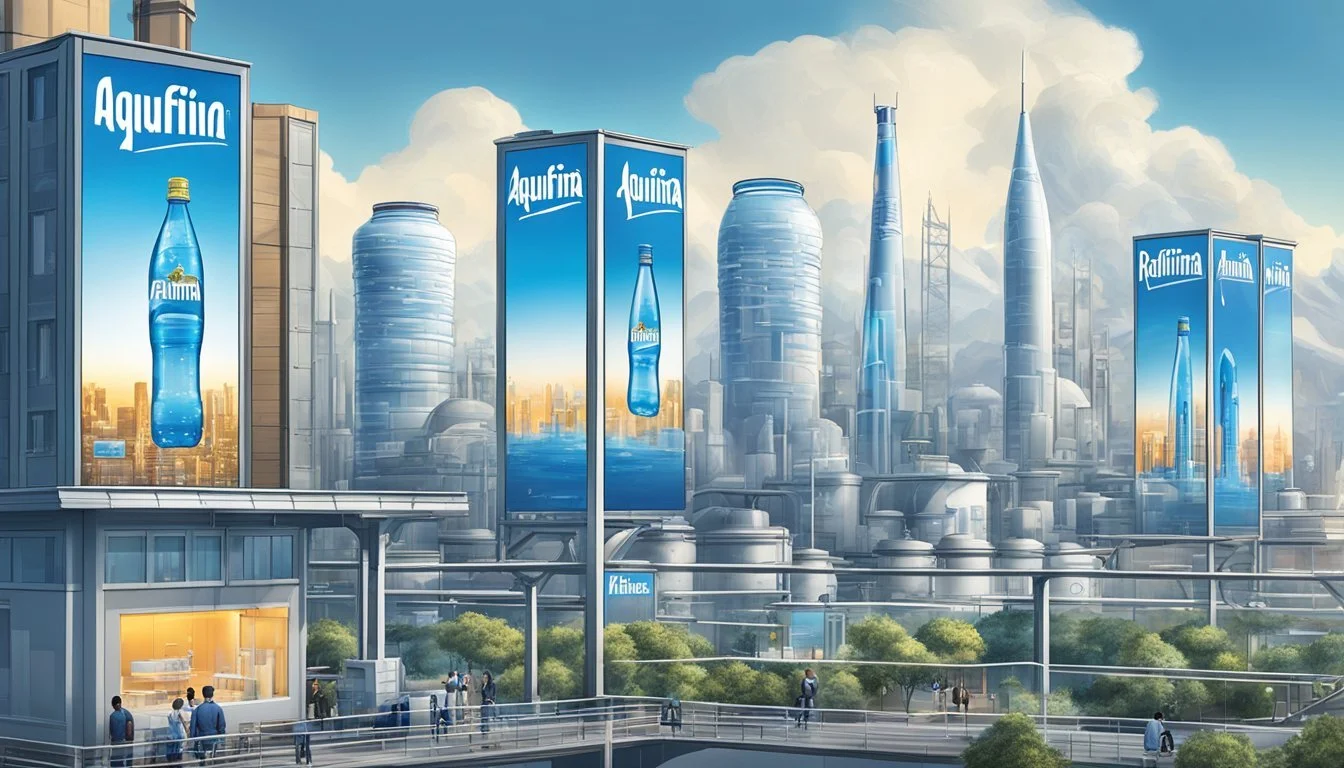Aquafina vs. Richard’s Rainwater
The Ultimate Bottled Water Showdown
When it comes to choosing between Aquafina and Richard’s Rainwater, many consumers find themselves at a crossroads. Aquafina, a product of PepsiCo, is well-known for its purification process, which ensures a clean and crisp taste. Richard’s Rainwater, on the other hand, offers an entirely different experience, having been collected directly from the sky and naturally purified. Both brands have their loyal followers, but what sets them apart?
For those who prioritize taste and sustainability, Richard’s Rainwater might be the superior choice. This brand prides itself on its eco-friendly practices and unique sourcing method, which not only supports environmental conservation but also lends a distinct freshness to the water. On the flip side, Aquafina's extensive availability and consistent quality make it a safe bet for anyone seeking reliable hydration.
The debate between these two bottled waters boils down to personal preference and values. Richard’s Rainwater appeals to eco-conscious consumers, while Aquafina attracts those who value convenience and consistent purity. By examining the attributes of each brand, this comparison aims to help readers make an informed decision on which bottled water best suits their needs.
Brand Overviews
Aquafina and Richard's Rainwater bring unique histories and approaches to the bottled water market. Understanding the background of these brands provides insight into their philosophies and what differentiates them.
History of Aquafina
Aquafina is a prominent bottled water brand owned by PepsiCo. Launched in 1994, it swiftly gained popularity due to extensive marketing and distribution networks. Aquafina's purification process includes multiple steps like reverse osmosis, ensuring the water achieves a pure, crisp taste. The brand emphasizes accessibility and affordability, making it a staple on store shelves across the globe.
Aquafina sources its water from public water systems, which is then treated and purified. This method has sparked discussions about the value and environmental impact of bottled water. Nevertheless, Aquafina remains one of the best-selling bottled water brands in the world.
Richard Heinichen and the Birth of Richard's Rainwater
Richard Heinichen founded Richard's Rainwater in 1994, inspired by the potential of harvesting rainwater. Located in Dripping Springs, Texas, the company claims to be the first in the U.S. to bottle rainwater. The concept revolves around sustainability and purity, as rainwater undergoes natural filtration and minimal treatment compared to traditional sources.
Richard's Rainwater differentiates itself by offering a product perceived as more eco-friendly. The company prides itself on a process that collects, filters, and sterilizes rainwater without chemical additives. Richard Heinichen's vision encompasses reducing groundwater depletion and promoting sustainable water solutions, making Richard's Rainwater a unique player in the bottled water industry.
Sourcing and Collection Methods
Aquafina and Richard’s Rainwater differ significantly in their water sourcing and purification methods. These methods impact both the quality and taste of their bottled water offerings.
Aquafina's Purification Process
Aquafina claims it uses a rigorous 7-step HydRO-7 filtration process to purify its water.
Origin: Aquafina sources its water from municipal water supplies.
Initial Filtration: The water undergoes pre-filtration to remove large particles.
Reverse Osmosis: This step removes potential contaminants and impurities.
Additional Filtration: Activated carbon and polishing filters enhance the water's purity.
UV Light Treatment: Eliminates any remaining microorganisms.
Ozonation: Finally, ozone is used to ensure the water is thoroughly disinfected.
This step-by-step process results in a product that is free from most substances commonly found in untreated water.
Richard's Rainwater Collection Sites
Richard's Rainwater takes an innovative approach by harvesting rainwater directly from the clouds.
Origin: The rainwater collection is initiated before the water hits the ground, ensuring its purity.
Collection Sites: Sites like the Faubourg Brewing Co. in Texas and Tank Town are primary collection areas.
Storage: The captured rainwater is stored in specialized tanks designed to maintain its cleanliness.
Purification: While the rainwater is already pure, it undergoes a minimal filtration process to meet safety standards.
This method helps prevent storm runoff contamination and positions Richard's as a sustainable and eco-friendly option.
Environmental Impact
Assessing the environmental impact of bottled water options such as Aquafina and Richard's Rainwater involves examining the bottling process, packaging materials, and the sustainability of water sources.
Bottling Process and Sustainability
Aquafina, produced by PepsiCo, is typically packaged in plastic bottles. Plastic production and disposal contribute to significant environmental concerns, including resource depletion and pollution. The manufacturing of plastic bottles requires petroleum and energy, releasing greenhouse gases and impacting ecosystems.
Richard's Rainwater, on the other hand, employs rainwater collection from decentralized locations like New Orleans. The water is then purified and packaged in recyclable glass bottles and aluminum cans. These materials are more sustainable than plastic, as they are easier to recycle and generate less environmental harm. Using renewable rainwater uniquely positions Richard's Rainwater to achieve a net-positive impact on the environment.
Water as a Renewable Resource
Aquafina sources its water from various municipalities and undergoes an extensive purification process. This reliance on tap water means it is not a renewable source, given the significant treatment and distribution infrastructure involved.
In contrast, Richard's Rainwater relies on rainwater, a genuinely renewable source collected and purified on-site. This approach reduces the burden on existing water supplies and minimizes the energy required for water transport and treatment. Using rainwater supports the sustainability movement by leveraging a naturally recurring resource that requires minimal processing. By focusing on renewable drinking water, Richard's Rainwater contributes positively to environmental conservation efforts.
Health and Quality Standards
When comparing the health and quality of Aquafina and Richard’s Rainwater, it is essential to consider their bottled water standards as well as their mineral content and purity. Each brand follows distinct purification processes and adheres to various health regulations, impacting their overall quality.
Comparing Bottled Water Standards
Aquafina is well-known for its rigorous 7-step HydRO-7 filtration process. This method claims to eliminate more impurities than most other bottled waters, enhancing the purity of the water. The process includes carbon filtration, ozonation, and reverse osmosis.
Richard’s Rainwater, in contrast, is sourced from rainwater collected and purified through a less invasive process. It emphasizes minimal chemical treatment, which aligns with its ethos of providing clean water with minimal processing.
Both brands comply with FDA standards for bottled water. Aquafina ensures its water meets strict quality standards through extensive testing for contaminants like chlorine and fluoride. Richard’s Rainwater proudly highlights its clean and natural origin, often surpassing the basic requirements by avoiding harsh chemicals and ensuring purity through natural filtration.
Mineral Content and Purity
Aquafina's process leads to water with very low mineral content. This is achieved through reverse osmosis, which removes almost all dissolved solids. As a result, Aquafina adds a blend of mineral salts to enhance its taste. The water is free from common contaminants, making it safe but with minimal natural minerals.
Richard’s Rainwater retains a more natural mineral profile due to its collection method. After capture, the rainwater is purified to remove any potential pollutants but keeps essential minerals intact. This method ensures that the water remains rich in natural minerals without the need for added salts.
Both brands focus on maintaining high purity levels. Aquafina relies on rigorous filtration to remove impurities, while Richard’s Rainwater prioritizes minimal processing and natural purity. Both approaches ensure safe and clean water that meets health standards.
Product Range and Options
This section explores the variety offered by Aquafina and Richard's Rainwater, focusing on their diverse product lines to help consumers make informed choices.
Aquafina Varieties
Aquafina offers a range of bottled water products. Their primary product is Aquafina Pure Water, which undergoes a rigorous 7-step HydRO-7 filtration process to ensure purity. They also provide Aquafina Sparkling, available in various flavors such as Black Cherry and Lemon Lime, catering to those who enjoy a bit of fizz in their hydration.
Additionally, Aquafina markets Aquafina Flavorsplash, a flavored water option aimed at consumers looking for a more enjoyable taste experience without compromising on hydration. These options make Aquafina a versatile choice for diverse preferences, from still water purists to sparkling water enthusiasts.
Diversity in Richard's Rainwater Offerings
Richard's Rainwater stands out with its unique approach, capturing rainwater at the source and bottling it under the concept of "cloud to consumer." Their primary focus is on still and sparkling rainwater. Richard's Still Rainwater is known for its natural purity, being free from ground contaminants, making it a clean and refreshing choice.
On the other hand, Richard's Sparkling Rainwater adds a bubbly twist to the rainwater, appealing to those who prefer sparkling water. Furthermore, Richard's Rainwater emphasizes sustainability, using recycled materials for packaging and supporting eco-friendly practices, which is a significant draw for environmentally conscious consumers.
Availability and Distribution
Aquafina and Richard’s Rainwater both have distinct distribution strategies, impacting their retail presence and accessibility for consumers across different locations.
Retail Presence of Aquafina
Aquafina enjoys widespread availability, making it easily accessible in a range of retail environments. Supermarkets such as Kroger, Albertsons, and H-E-B frequently stock Aquafina, ensuring its presence in both urban and rural areas.
Convenience stores and gas stations also carry Aquafina, catering to on-the-go consumers. Big-box retailers like Walmart and Target add to its extensive reach. Aquafina’s presence in various vending machines and food service locations further solidifies its accessibility. This extensive retail network highlights Aquafina’s penetration in the bottled water market, making it a convenient choice for many consumers.
How to Find Richard's Rainwater
Richard’s Rainwater targets a more niche market with its distribution strategy, emphasizing natural and eco-friendly outlets. Natural grocers such as Whole Foods Market and Sprouts Farmers Market prominently feature Richard’s Rainwater, aligning with the brand’s emphasis on sustainability.
Independent grocers and specialty stores also carry this brand, catering to consumers who prioritize environmentally friendly products. Additionally, Richard’s Rainwater often partners with local family ranches and farms for distribution, making it a popular choice in certain regions.
Consumers can also find Richard’s Rainwater through online retail platforms, expanding its reach beyond traditional retail spaces. This strategic distribution in both physical and digital spheres enhances its accessibility while maintaining a focus on eco-conscious consumers.
Consumer Engagement
Aquafina and Richard's Rainwater employ distinct strategies to connect with their consumer base. Aquafina focuses heavily on digital marketing channels, while Richard's Rainwater emphasizes local community involvement and environmental sustainability.
Aquafina's Marketing Initiatives
Aquafina leverages social media platforms such as Instagram, Twitter, and Facebook to engage their audience. They use targeted ads and influencer partnerships to increase brand visibility and consumer interaction.
Regular giveaways and contests are common on their social media channels, fostering a sense of community among followers.
Aquafina’s website also features user-friendly sections for customer feedback and product reviews, enabling direct communication with their audience. This proactive engagement helps them continually refine their offerings based on consumer preferences.
Richard's Rainwater Community Outreach
Richard's Rainwater places a strong focus on local communities and sustainability. They often collaborate with environmental groups and participate in local events to promote their eco-friendly practices.
A key figure in their community outreach is Sarah Karger, who spearheads many of these initiatives.
They utilize LinkedIn to network with organizations sharing similar values and amplify their community-focused projects.
Engagement efforts also include educational workshops about sustainable water practices, helping the company build a loyal, informed customer base. By emphasizing transparency in their sourcing and production processes, Richard's Rainwater fosters trust and a deeper connection with its consumers.
Future Trends and Innovations
Both Aquafina and Richard’s Rainwater are poised to benefit from advancements in water filtration technology and a growing emphasis on sustainable practices. This section explores how technological innovations and emerging markets may shape the future of these bottled water brands.
Technological Advancements in Water Filtration
Aquafina utilizes the HydRO-7 filtration system, which ensures high levels of purity by removing impurities commonly found in other bottled waters. Innovations in filtration technology are expected to enhance the efficiency and effectiveness of such systems, potentially reducing operational costs and improving water quality.
Richard’s Rainwater leverages rain capture facilities in Louisiana and Oregon. Future advancements in rainwater collection and filtration could enhance their ability to purify large volumes of rainwater, ensuring it meets safety standards. This technology is likely to become more sophisticated, allowing for better scalability and reliability in providing clean water.
Emerging Markets and Sustainable Practices
The bottled water industry is seeing a shift toward sustainable practices. Richard’s Rainwater emphasizes its use of a renewable source and infinitely recyclable bottles, appealing to environmentally conscious consumers. Their operations in strategic locations like the Southeast could expand as they tap into emerging markets looking for green alternatives.
Aquafina is also responding to this trend by exploring sustainable packaging and more efficient production methods. Beverage manufacturers are increasingly under pressure to reduce their environmental impact. As these trends continue, companies will need to innovate not just in product quality but also in minimizing their carbon footprint to stay competitive.








